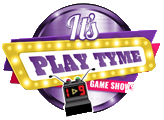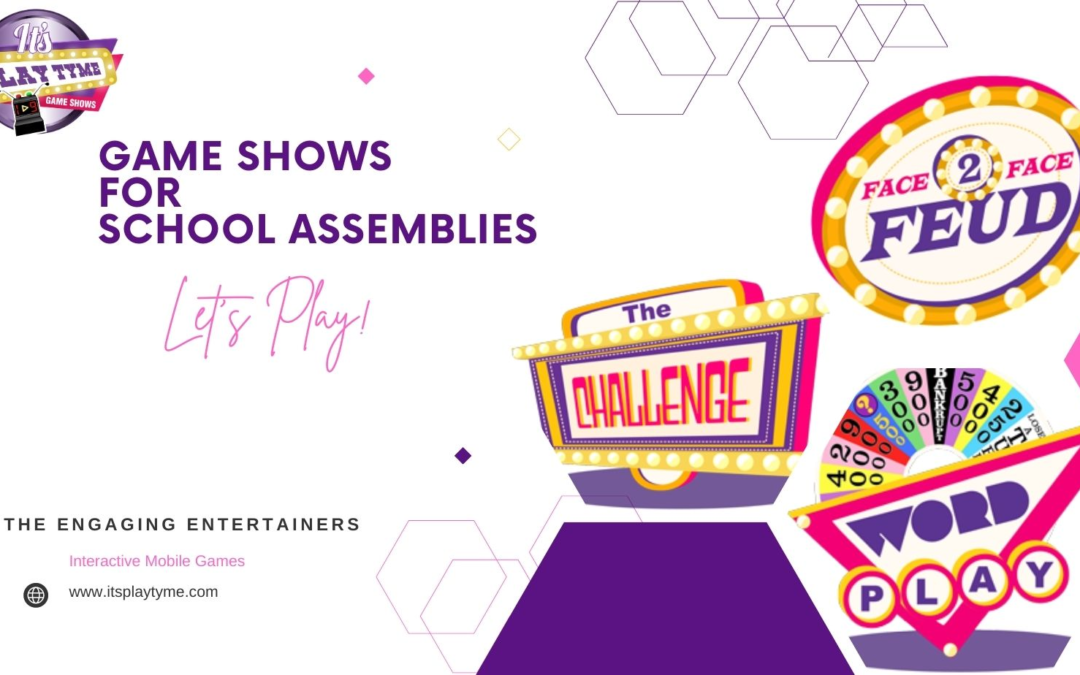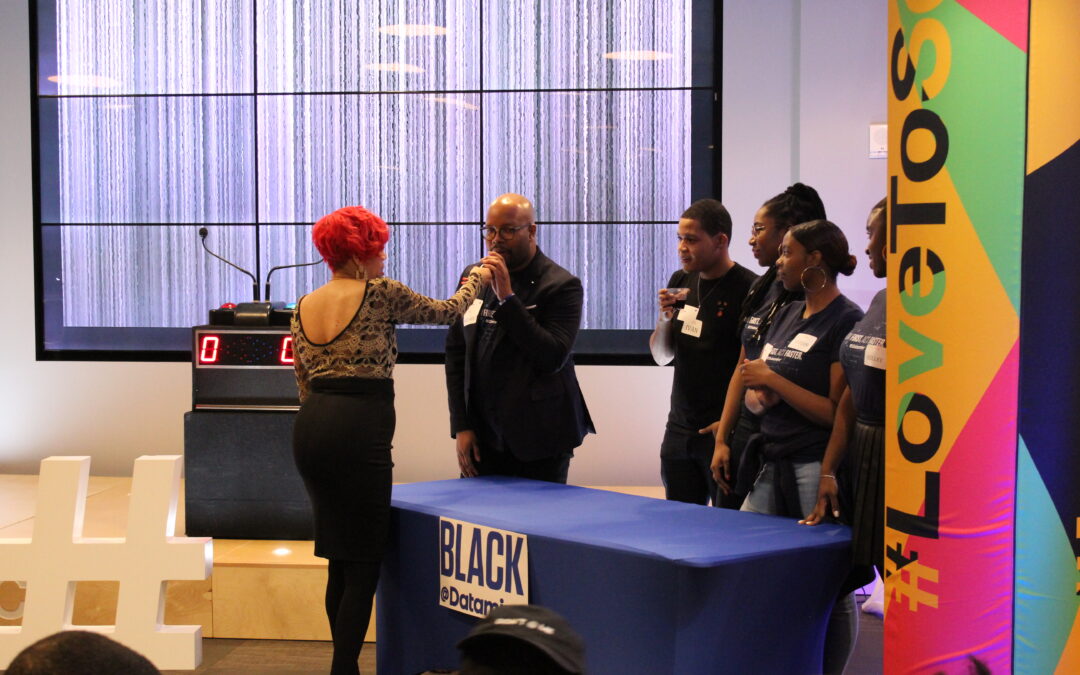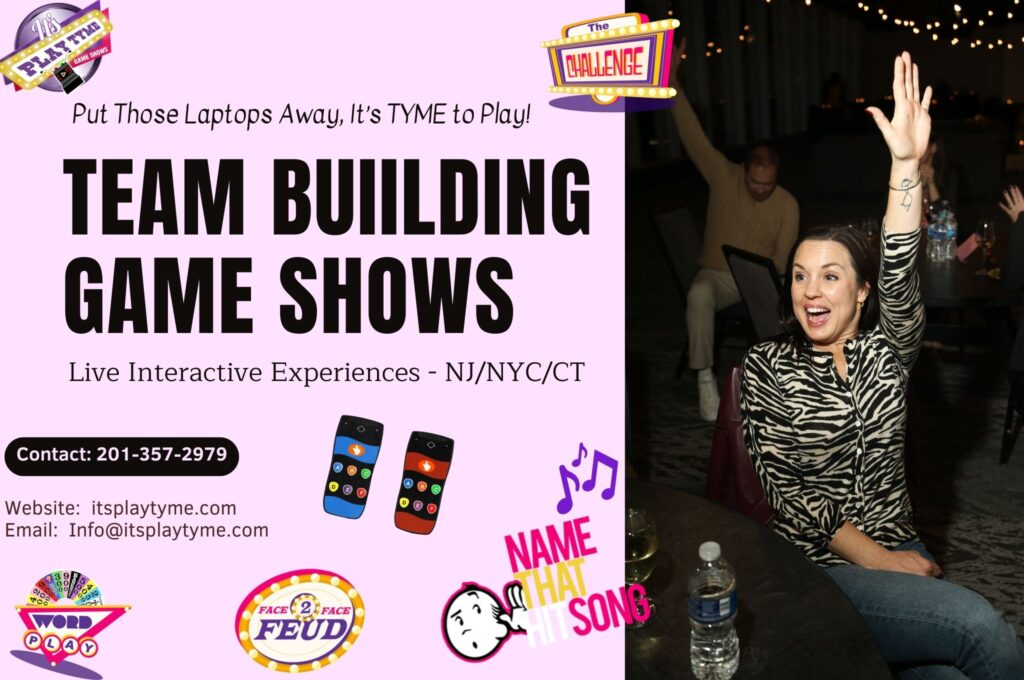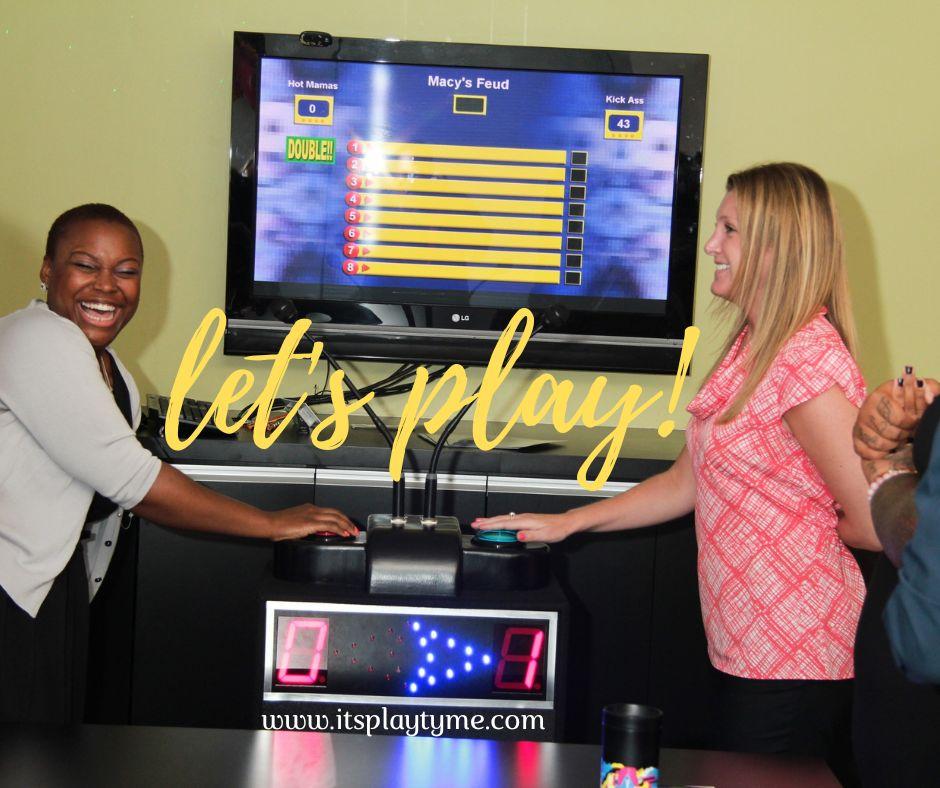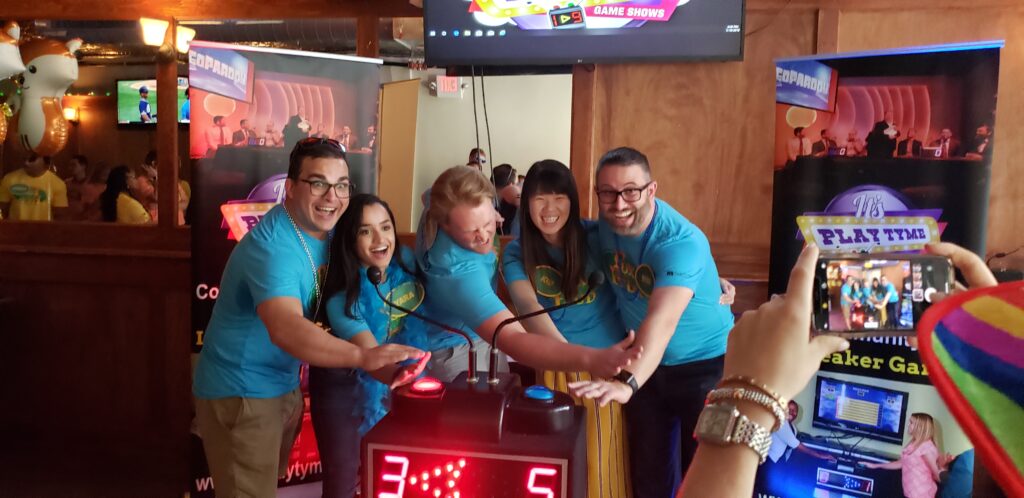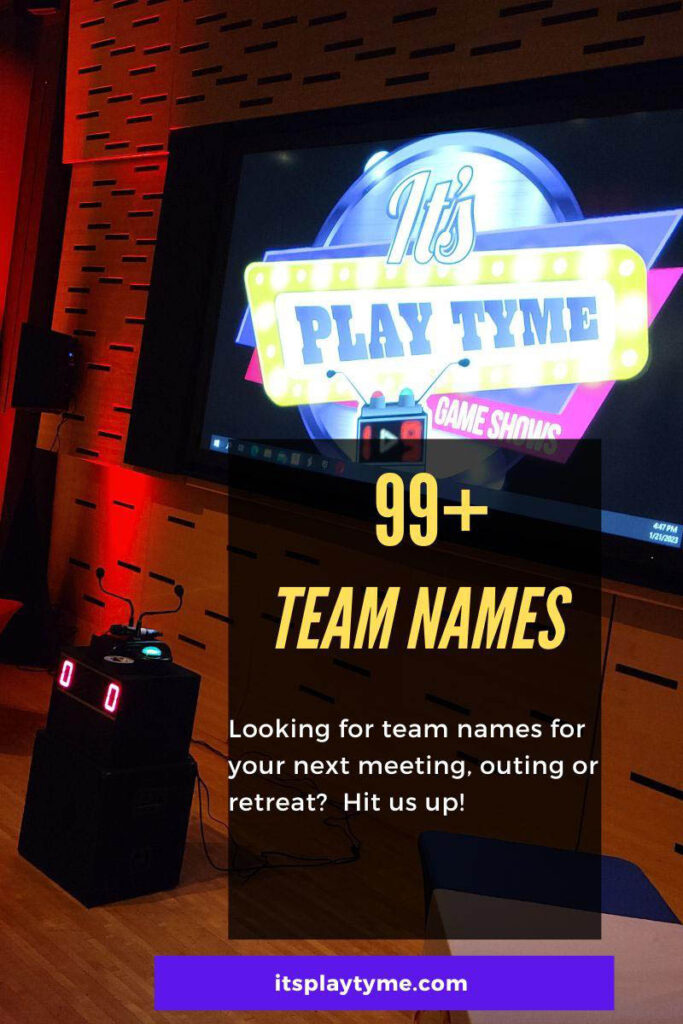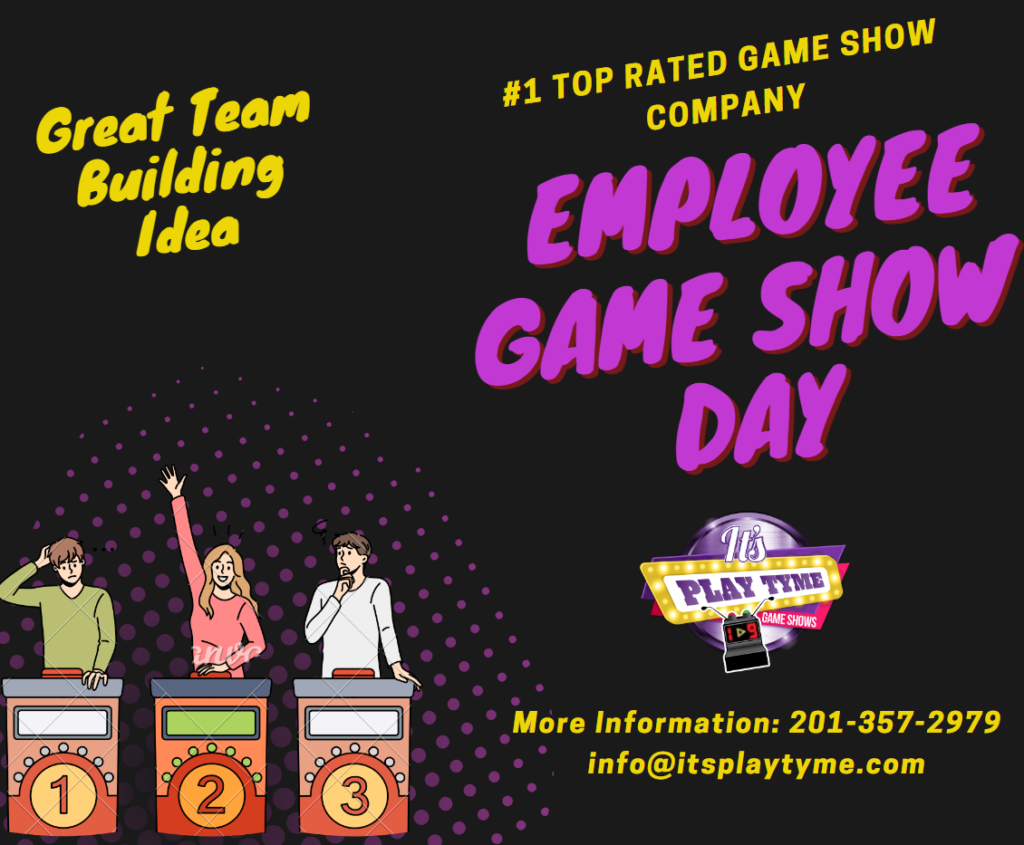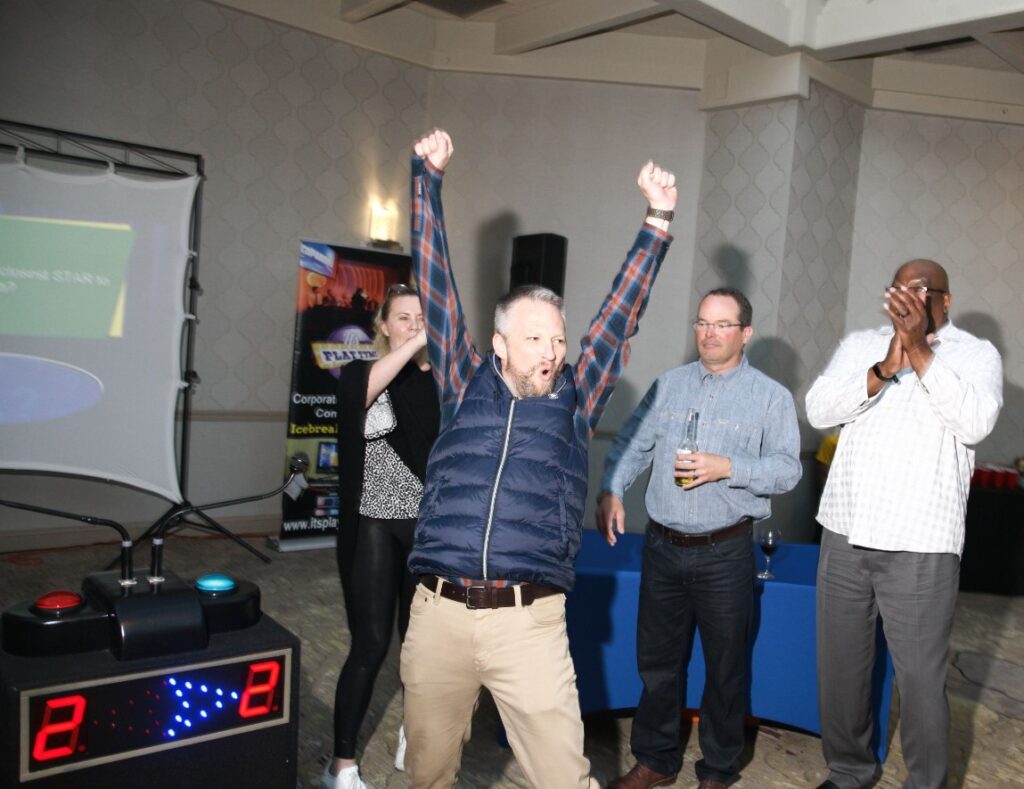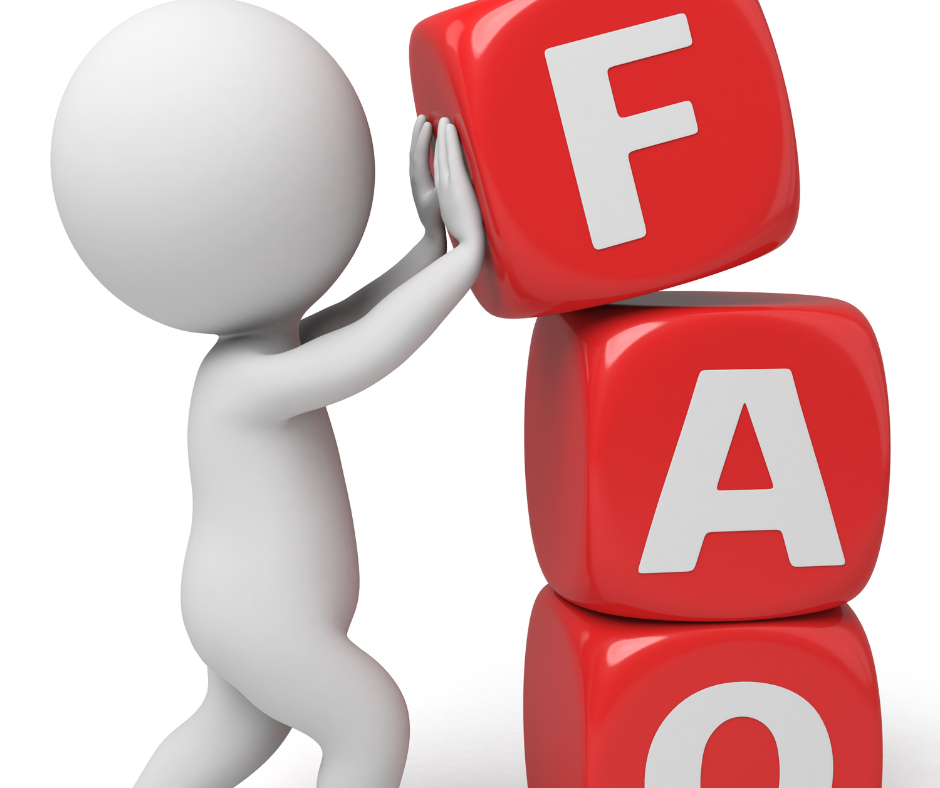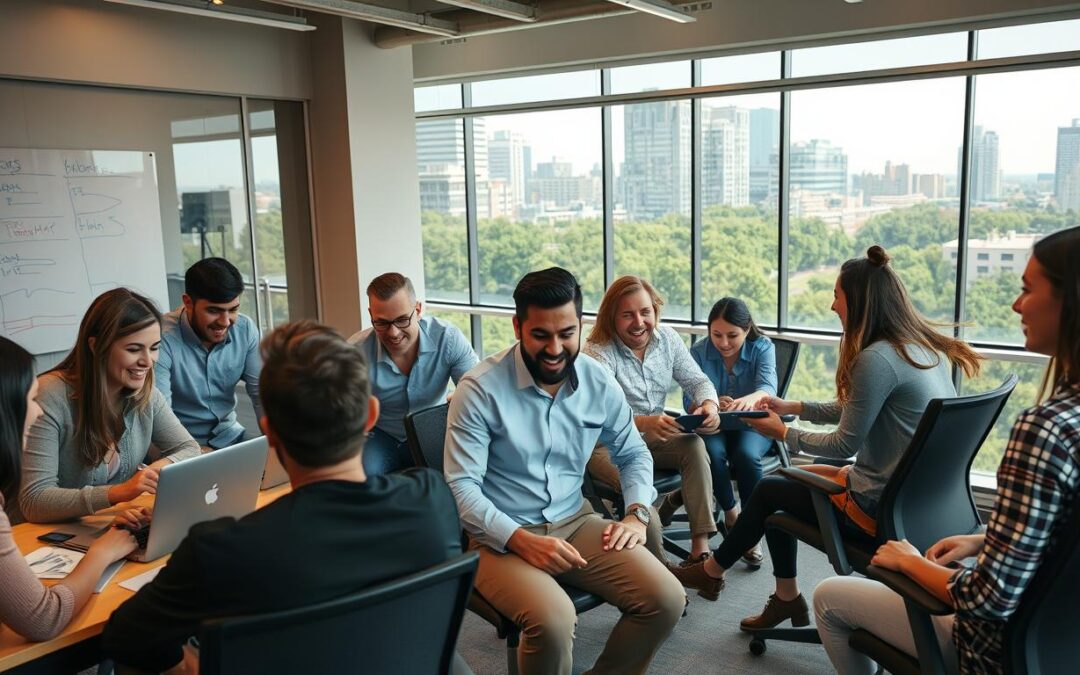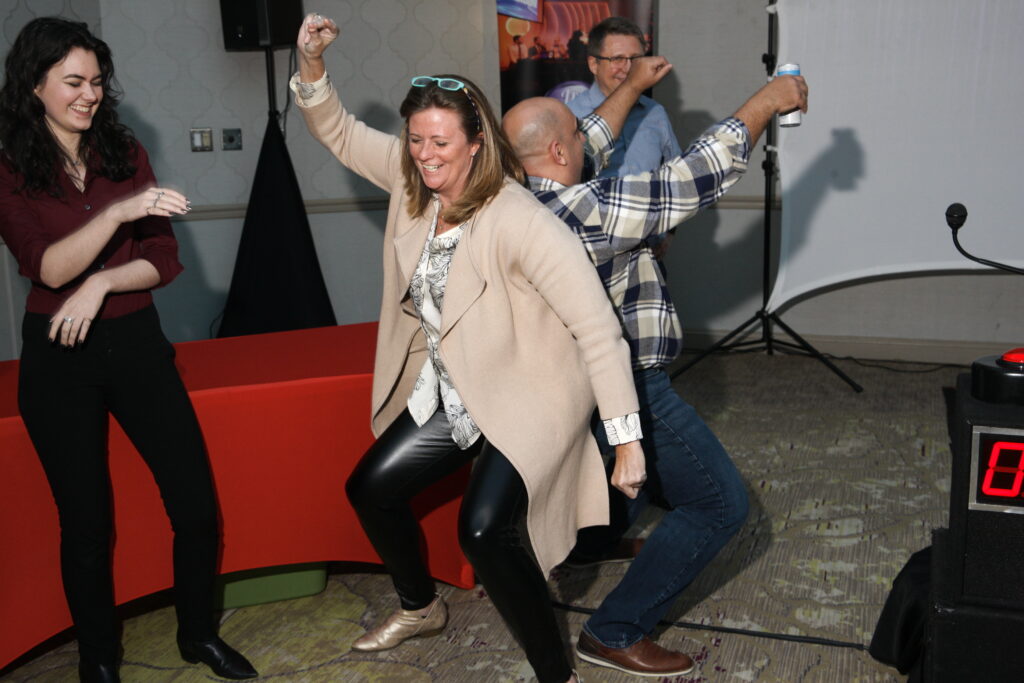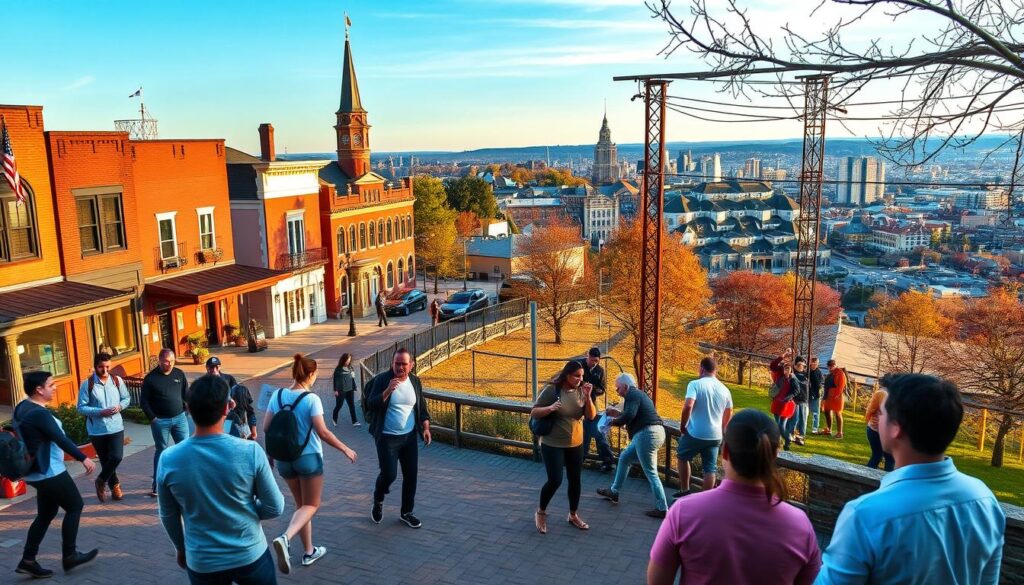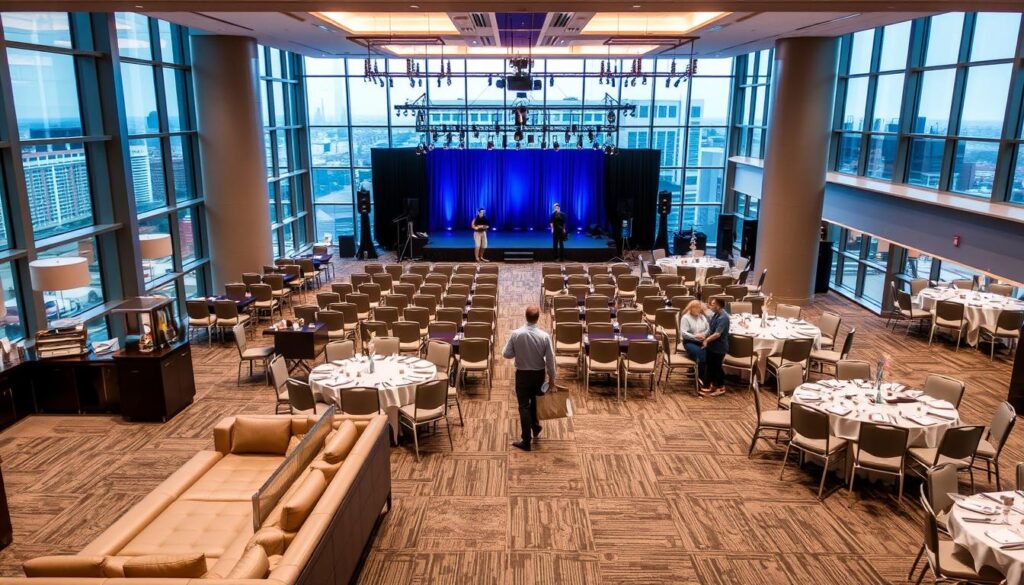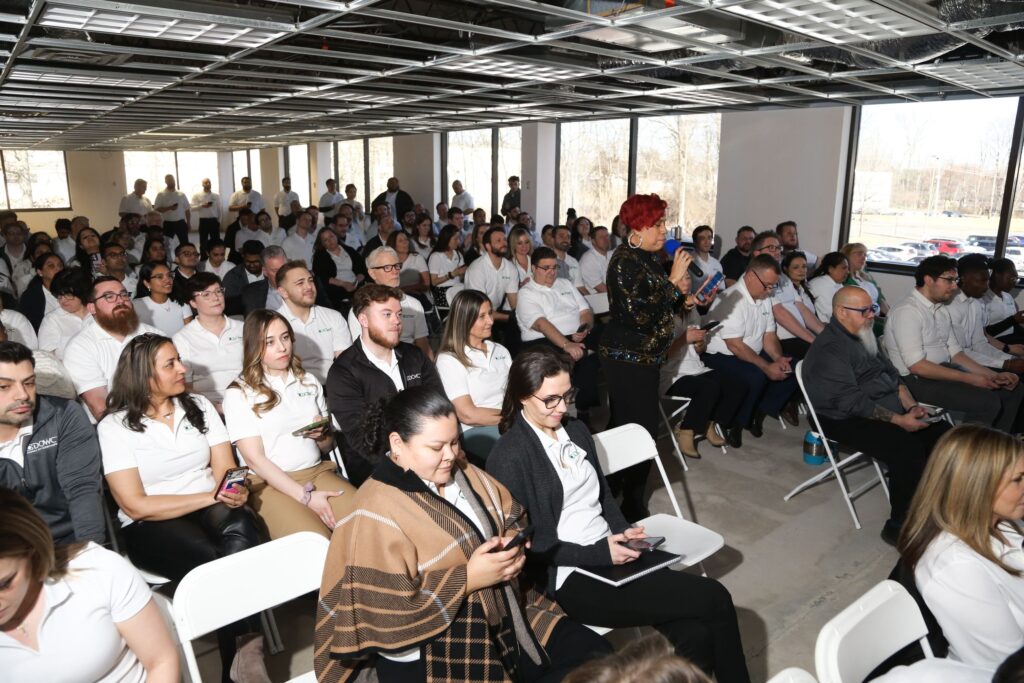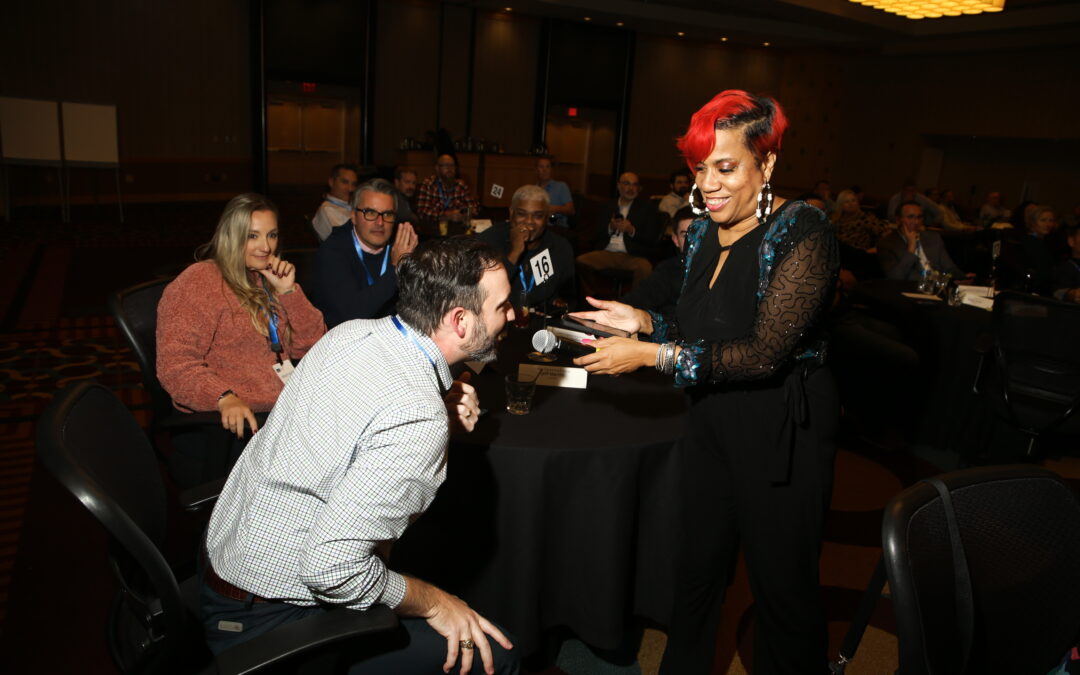
January Corporate Holiday Party Ideas | NJ, NYC, CT Companies
Many companies across New Jersey, New York City, and Connecticut are choosing to host their corporate holiday or end-of-year parties in January because it’s easier to schedule, more cost-effective, and far more engaging for employees. Budgets reset, calendars open up, and teams are no longer distracted by year-end deadlines, making January the ideal time to celebrate properly. That shift is why more organizations are upgrading their January events with interactive game show experiences that deliver instant energy, full participation, and zero awkwardness.

Game Shows for Team Building
Key Insights & Takeaways
If you’re short on time, here’s what matters most:
- January corporate holiday parties are strategic, not second-best
- Teams are more present and engaged after the holidays
- Budgets and calendars are easier to manage
- Game show experiences outperform passive entertainment
- January is ideal for large groups across NJ, NYC, and CT
When planned correctly, January events don’t feel delayed; they feel deliberate.
Why December Corporate Parties Don’t Always Work Anymore
Here’s the part most leaders won’t say out loud.
December is chaotic.
Between end-of-year reporting, client deadlines, PTO schedules, and personal obligations, corporate parties often feel rushed or worse, like an obligation. Attendance dips. Energy is low. And the event meant to boost morale becomes something employees simply “get through.”
In NJ, NYC, and CT, where teams are already stretched thin by commuting, hybrid schedules, and packed calendars, December events frequently miss their mark.
January flips the script. If you want a January event that gets full participation without awkward icebreakers, explore interactive game show team-building events.
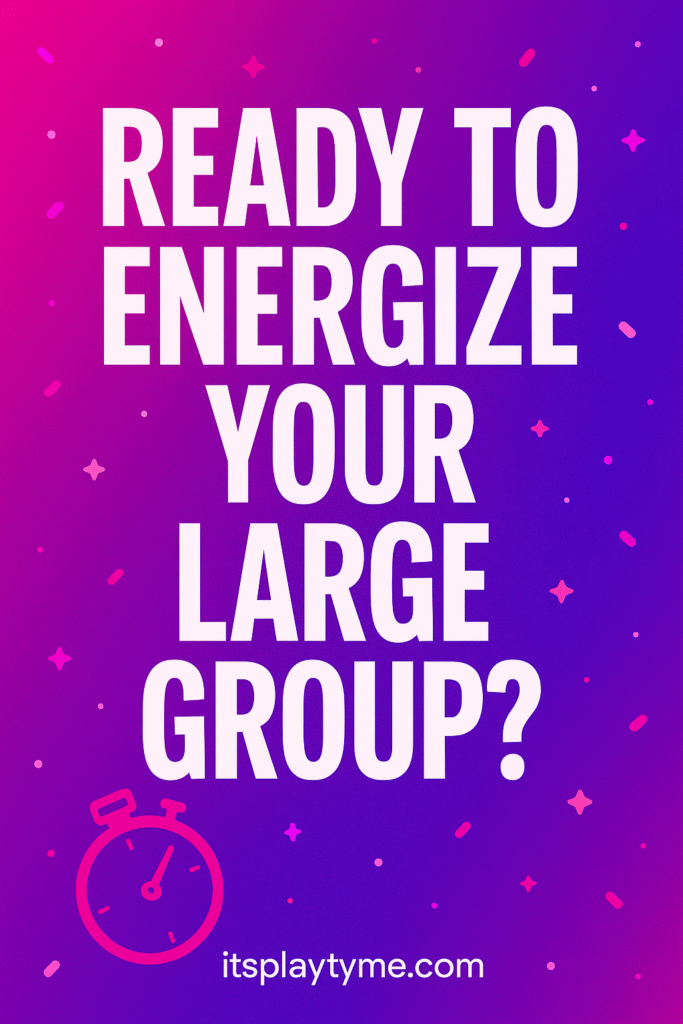
Book a Live Game Show!
[Best Team Building Games - We Come to Your Location - 100% Satisfaction Guaranteed - Click Below - SERIOUS INQUIRIES ONLY]
Why January Is the New Sweet Spot for Corporate Celebrations
January corporate events aren’t a downgrade, they’re an upgrade.
Here’s what changes immediately:
- More availability – venues, vendors, and teams are easier to schedule
- Better budgets – new fiscal cycles create flexibility
- Less pressure – no competing holiday stress
- Higher participation – employees are present, focused, and receptive
Instead of forcing celebration into December chaos, companies are using January to close the previous year with intention and start the new one with momentum.
That’s exactly where high-energy game show formats shine.
Find the Perfect Game Show for Your Team
Pick the Ideal Match for Your Team’s Unique Goals and Needs – Click Below
January Corporate Holiday Party Ideas That Engage Teams
If you’re hosting a January corporate party, the goal isn’t “holiday leftovers.” It’s energy, connection, and a clean reset.
The most successful January corporate holiday party ideas move away from traditional entertainment, where a few people perform, and everyone else watches, and replace it with an interactive activity that involves the entire room at once. That’s why companies are choosing live, hosted game shows like PlayPad Mania, where everyone plays simultaneously using keypads or their own devices. No spectators. No sidelines. Just full participation that turns the whole group into part of the experience.
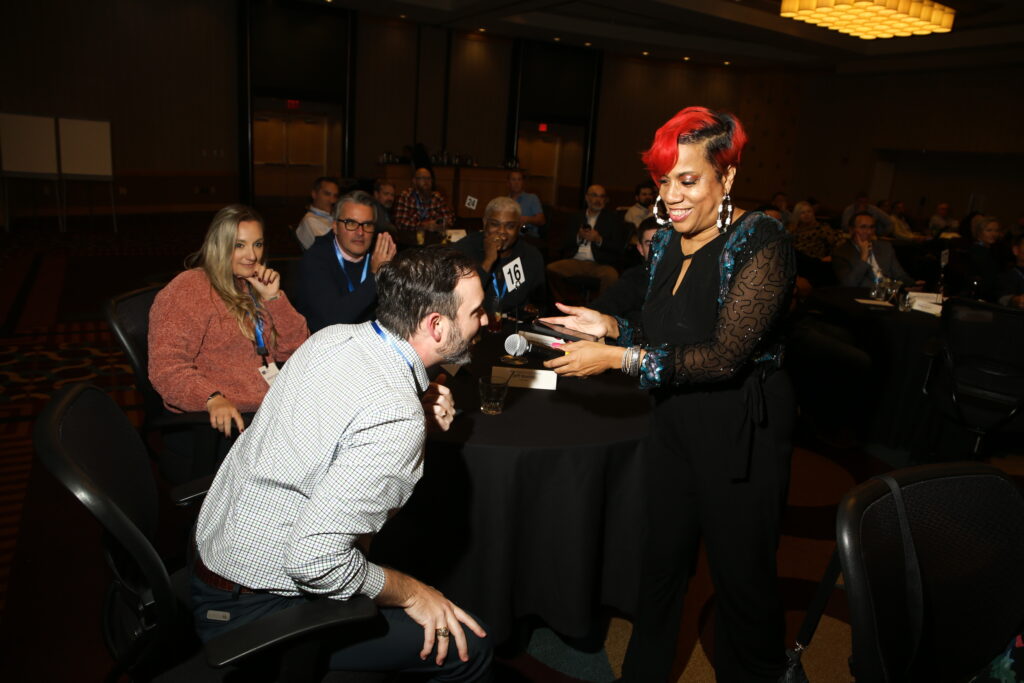
Book a Live Game Show!
[Best Team Building Games - We Come to Your Location - 100% Satisfaction Guaranteed - Click Below - SERIOUS INQUIRIES ONLY]
Why Game Show Activities vs. Traditional Entertainment
Game shows outperform traditional mixers, dinners, and passive entertainment, especially in January, because they solve the biggest corporate event challenges all at once.
What Game Shows Do Better
- Engage 20–300+ people simultaneously
- Remove awkward small talk and forced icebreakers
- Create friendly competition without pressure
- Get executives and staff playing side-by-side
- Keep energy high from start to finish
For January events, when teams are reconnecting after time off, this format creates instant chemistry. People open up faster in play than they ever will in a meeting.
One of the fastest ways to energize a room is a Face-2-Face Feud game show it sparks instant collaboration and friendly competition.
High-Impact January Party Formats That Work Best
Game show–style corporate events are especially effective for corporate offices, executive and leadership teams, January sales kickoffs, end-of-year recognition celebrations, and company-wide morale boosters.
For teams that enjoy smart, competitive energy, a Jeopardy-style corporate trivia game show is an ideal January format. And for groups that want fast-paced momentum, minute-to-win-it games for corporate events deliver high engagement without long attention spans.
Because these experiences are fully facilitated and turnkey, HR and office managers don’t have to manage logistics, participation, or flow. The structure does the heavy lifting.
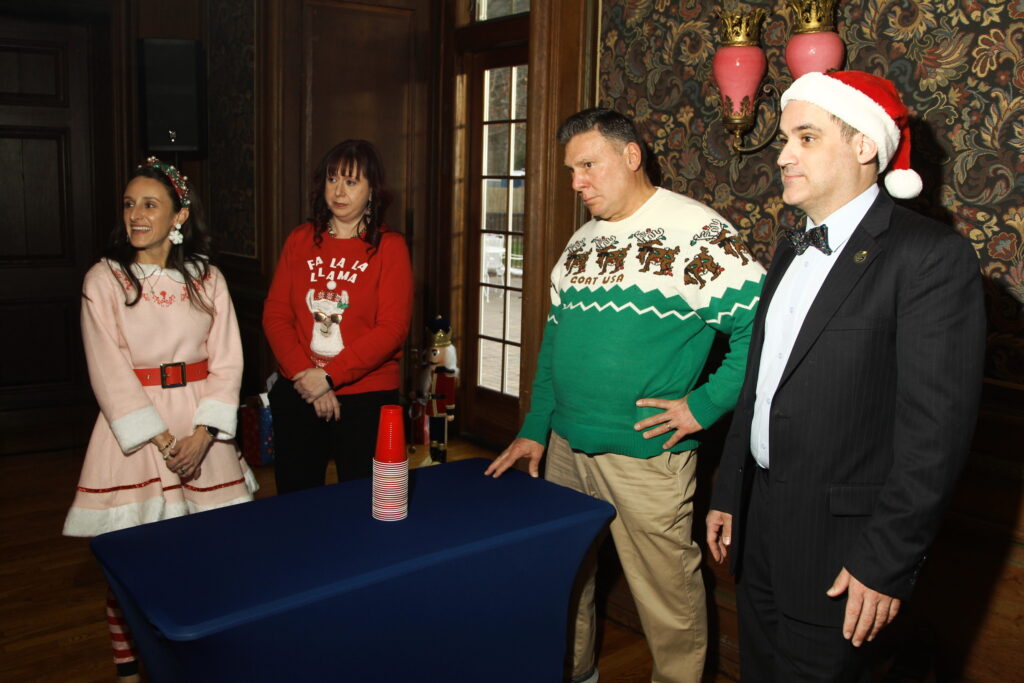
Book a Live Game Show!
[Best Team Building Games - We Come to Your Location - 100% Satisfaction Guaranteed - Click Below - SERIOUS INQUIRIES ONLY]
Case Studies: January Corporate Parties That Delivered Real Results
Across the New York City tri-state, companies that intentionally moved their holiday celebrations to January saw a noticeable shift in how their teams showed up. Instead of rushed December gatherings, these organizations designed January events around interactive game shows that required full attendance and participation.
In practice, that meant higher attendance because fewer employees were out, stronger engagement across departments that don’t typically interact, and executives participating alongside their teams rather than observing from the sidelines. Planners also reported that conversations sparked during the event continued well after it ended, something rarely seen with traditional holiday parties.
January events didn’t feel like an obligation on the calendar. They felt purposeful, and that difference showed in both energy and morale.
Who January Corporate Game Show Parties Are For
This is for you if:
- You’re an HR Director, Office Manager, or Executive Assistant
- You’re planning for 20–300+ participants
- You want visible engagement without micromanaging logistics
- You need an experience that works for mixed personalities and seniority levels
Game shows work best when the goal is a real connection with zero stress.
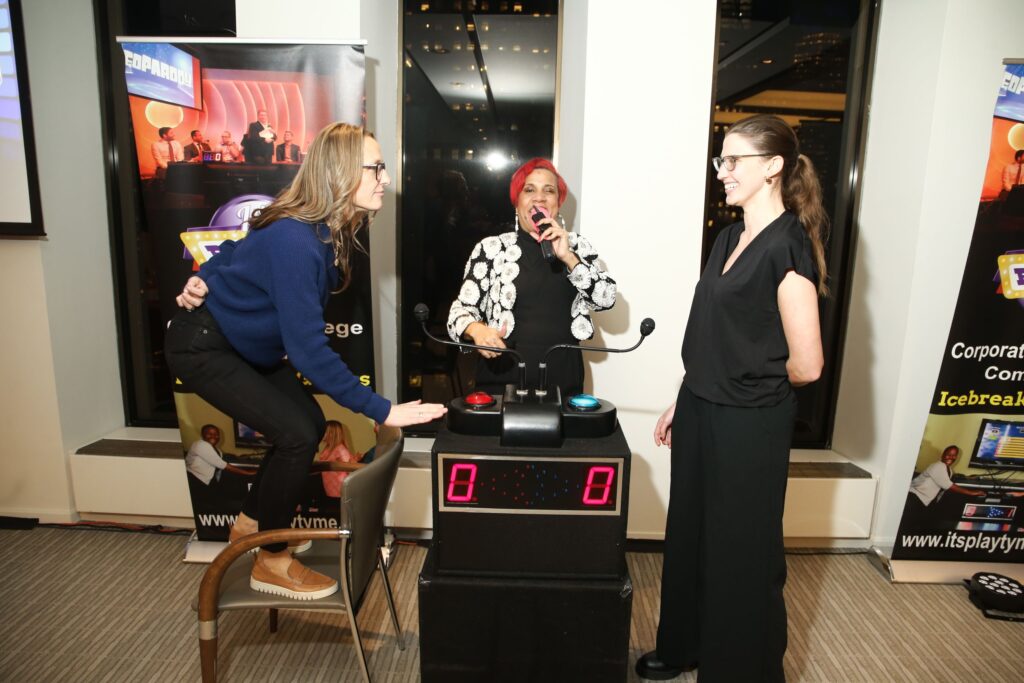
Final Thoughts
January corporate holiday parties aren’t about catching up on what didn’t happen in December; they’re about doing it better. When companies move away from traditional entertainment and instead choose interactive experiences where everyone participates, not just a selected few, the result is real connection, higher energy, and momentum that carries into the year ahead.
That’s why interactive game shows work so well in January. They re-engage teams after time off, reset dynamics naturally, and remove the pressure of forced interaction. The structure drives participation, the competition keeps energy high, and the experience feels intentional instead of rushed. For organizations across New Jersey, New York City, and Connecticut, the most effective January corporate holiday party ideas don’t feel delayed; they feel deliberate, memorable, and worth repeating.
FAQs: January Corporate Holiday Party Ideas (NJ, NYC, CT)
Is it strange to host a holiday party in January?
Not at all. Many companies now prefer January because attendance is higher, stress is lower, and engagement is stronger than December events—especially for teams across New Jersey, New York City, and Connecticut.
Why are game shows so effective for January corporate events?
Game shows create structured fun that gets everyone involved immediately. They remove awkward small talk, spark friendly competition, and help teams reconnect fast after the holidays.
Can game shows work for large corporate groups?
Yes. Well-designed game show experiences scale seamlessly from 20 to 300+ participants, making them ideal for department-wide or company-wide January celebrations.
Are January corporate game show events still professional?
Absolutely. Professionally facilitated game shows are polished, organized, and designed specifically for corporate audiences—perfect for executive teams, sales kickoffs, and end-of-year recognition events.
Are January events cost-effective?
Often, yes. January typically offers better availability, pricing flexibility, and fewer last-minute costs compared to December—while still delivering a high-impact experience.
What’s the best January activity for teams that want maximum engagement?
A live, hosted game show is one of the most effective January corporate holiday party ideas because it gets everyone participating at the same time—without awkwardness, downtime, or heavy planning.
